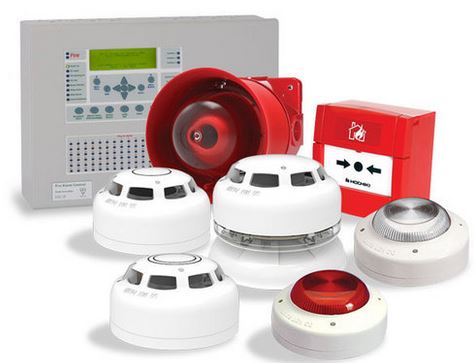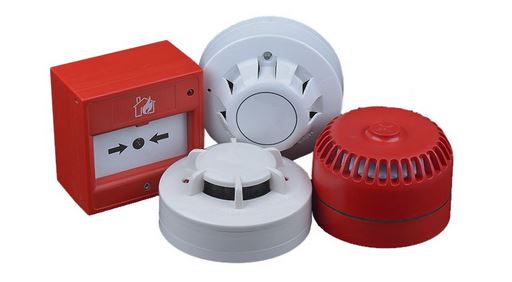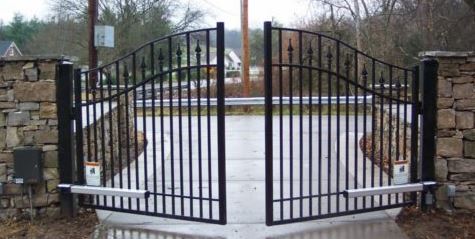Residential Firewall Alarm System Kenya
Fire accidents have the capability of bringing down investments that have taken many years to build. This is why traders and businesses should invest in reliable fire alarm system in Kenya. We also supply and install fire suppression system and detection equipment in Kenya.
In our modern world, the safety and protection of lives and property are paramount concerns. Fire outbreaks can occur without warning, spreading rapidly and causing devastating consequences. These systems play a crucial role in suppressing unwanted furnace. The installation of control panel, smoke detectors, and siren can help detect and alert occupants to potential furnace hazards. The alert allow for timely evacuation and intervention.

Fires can ignite from various sources, including electrical malfunctions, cooking accidents, chemical reactions, or even intentional acts of arson. In case of a fire, every second counts, and swift action can be the difference between life and death. Fire suppression system is designed to detect smoke, heat, or flame and alert occupants to evacuate safely. These systems also provide early warnings to authorities, enabling faster response times and reducing the overall damage caused.
Fire Alarm Equipment Price In Kenya
| Fire Alarm Panel | KES 28,000 |
| Smoke Detector | KES 3,000 |
| Heat Detector | KES 7,000 |
| Strobe Light & Sounder | KES 4,400 |
| Break Glass | KES 4,800 |
| Foam Fire Extinguisher | KES 8,500 |
| Dry Powder Fire Extinguisher 9KG | KES 7,200 |
| CO2 Fire Extinguisher | KES 8,400 |
| Fire Blanket | KES 4,000 |
How fire suppression system works
A comprehensive fire suppression system operate on a simple yet effective principle. The alarm system consist of several components, including smoke detectors, heat sensors and the control panel. Also included is alarm bell or siren, and can sometimes be integrated with automated sprinkler systems. When any of these components detect the presence of smoke, excessive heat, or flames, they trigger the alarm.
Smoke detectors are among the most common components of these systems. Smoke detectors use ionization or photoelectric technology to detect smoke particles in the air. Ionization detectors are highly sensitive to fast-burning furnaces. However, photoelectric detectors are more effective at detecting smoldering fires. Even so, heat sensors respond to rapid increases in temperature. And, are often found in areas where smoke detectors may not be suitable, such as the kitchens.

Upon activation, the control panel processes the signals received from the detectors and sounds the alarm. In more advanced systems, the control panel can be integrated with the sprinklers, to automatically activate them when needed.
Contact us now for CO2 extinguishers, smoke detectors, heat sensors, control panels and much more in Kenya. Whether at a retail shop outlet or in a mega shopping complex, safety and preparedness are important across the board. We also install alarm system both in residential apartments and homes.
see; CCTV cameras
Types of fire detection systems
Conventional fire alarm systems: These are the simplest and most economical systems suitable for smaller buildings. They divide the premises into zones, and when an alarm is triggered, the control panel indicates the affected zone but does not provide precise information about the exact location of the alarm.
Addressable fire alarm systems: Addressable systems are more sophisticated and widely used in larger buildings. Each detector or sensor in the system has a unique address, enabling the control panel to identify the specific location of the alarm. This precision helps in quicker response times and targeted evacuation.
Wireless Fire detection systems: These systems eliminate the need for extensive wiring, making them suitable for buildings where wiring installation is difficult or not feasible. The wireless systems offer flexibility and ease of installation, making them a popular choice for retrofitting older structures.
Intelligent Fire Systems: Combining the best features of addressable and conventional systems, bring to the table more advanced programming and diagnostics. They can analyze data from multiple sensors, predict potential fire risks, and provide real-time feedback on system health.

Be that as it may, these systems are indispensable tools in safeguarding lives and property from the devastating effects of fire outbreaks. These systems have evolved significantly. Today, they can facilitate faster response times, improved accuracy, and enhanced overall safety. By raising timely alarms and facilitating swift evacuation, these systems remain an essential component of modern-day building safety measures. And, they ensure that building occupants and the investments therein are protected from the unpredictable threat of fires.
Benefits of Fire Suppression Systems
Early detection and warning system: these systems are designed to detect fires at their inception, providing early warning to occupants. Early detection allows people to evacuate the building promptly, reducing the risk of injuries and fatalities.
Minimization of property damage: Swift detection and response can limit the spread of flames and smoke, minimizing property damage. In many cases, sprinklers integrated with the control panel can further suppress the unmanageable furnaces until firefighters arrive.
Faster emergency response: these systems automatically alert local rescue departments or monitoring centers, enabling a rapid emergency response. This immediate response is critical for containing the fire before it escalates.
Compliance with regulations: Many jurisdictions require buildings to have fire suppression system installed as part of their safety regulations. Complying with these regulations is essential for obtaining permits and maintaining the safety of occupants.
Peace of mind: these systems provide peace of mind to building occupants and owners, knowing that they have measures in place to protect their lives and investments.
With advancements in technology, fire alarm system have become more sophisticated and effective. Thus, these systems can be integrated with building management systems and smart devices, allowing for remote monitoring and control. This integration enhances the efficiency and responsiveness of the system.

Also, we now have smart fire suppression system that use cameras and artificial intelligence to detect flames and smoke visually. This technology can be used to complement the traditional detection methods and provide additional layers of safety.
Moreover, some systems enable two-way communication between occupants and monitoring centers. This feature allows emergency personnel to provide instructions to occupants during evacuation and relay critical information. Still, these systems can store data and reports in the cloud, accessible from any device connected to the internet.
see; best VoIP provider
Menvier fire system
The fire suppression systems in Kenya have the ability to detect smoke and fire outbreaks. It is important to install fire systems as a precautionary measure. Furthermore, it is a regulatory requirement for building contractors to have in place smoke and fire detectors strategically installed within buildings.
To begin with, dry powder and CO2 extinguishers can do a great job during fire emergencies. Additionally, it is important to have fire assembly points designated for use during emergencies. At the time of construction, making provisions for emergency exits is a must-have. These safety guidelines apply to both residential and commercial buildings. The alert and evacuation procedures are for industrial areas.
See; best IP PBX system in Kenya
In commercial industries, where fire outbreaks have the potential to bring about devastating effects, fire drills are supposed to be conducted regularly. At least two employees per organization should be trained in fire safety skills. The trained will be designated as the official company fire marshals. Basic skills such as using a fire extinguisher, how to break glass, fire evacuation procedures are essential.
The key components of the system

The fire control panel is the nerve center of the alarm system. The panel coordinates the input and output of signals from peripheral devices such as the smoke detectors. So, in the event of a fire emergency, the smoke detectors will send the signal to the control panel. The fire alarm panel will send a signal to the siren or the fire sounder. There are those buildings equipped with advanced voice evacuation systems. The alarm panel sends a signal to the public address system which alerts all offices within the building of an impending fire emergency.
The power supply unit is the source of electricity for powering up the entire alarm system. The power supply is integrated with backup systems so that the system can still work even if there is a power blackout. It is important to note that, these power supply units are not shareable. Therefore, CCTV cameras will use a different power supply unit. Likewise, the electric fence installation will be wired to its own power supply unit. Also, the burglar alarm system has its own power supply. Nonetheless, we still offer different sources for clean energy such as solar power instead of a backup generator.
Complete installation and commissioning of the smoke detection system is a good gesture towards fire preparedness but not an end in itself. There needs to be scheduled regular servicing of the system. Regular servicing will help in rectifying errors such as false alarms, power supply issues, or faulty wiring. It is also important to be certain that the heat detectors, break glass, and smoke detectors are all in sync with the control panel.
Why you should install a Fire Alarm System
Why is it important to install a fire alarm system at home or on office premises? There are so many benefits that come with installing a good smoke detection system. To begin with, the system usually acts as an early warning system. Thus, the precious lives of loved ones have been saved by smoke and heat detection systems. There is no better value from a system than saving lives and ensuring everybody lives in a safe secure building. Secondly, when the warning is passed to the emergency response unit early enough, whatever property that could otherwise be lost would easily be salvaged. In fact, these systems ensure that property and investments are not damaged or destroyed.

see; best call center software
So you might want to know, what is the fire alarm system? This is an automated system that detects and alerts people of danger. The system consists of an alarm panel, smoke detectors, heat detector devices, and break glass/ manual call point. The smoke detection system control panel will coordinate all the fire detection devices and other fire components.
The system is designed in such a way that the sounder system can be triggered in three ways only. For one, the smoke detectors will send a signal to trigger a fire alarm in the event that there is smoke within the building an absolute indicator that there is a danger. Secondly, the heat detectors can send a trigger signal to the alarm panel which in turn will set off the sounder. Lastly, the alarm system can be set off manually when a marshal breaks the glass.
The Fire System installation
A lot of the time, the building structure will determine the setup of the alarm system installation. This was true with the conventional system. The maxim still holds true for the addressable fire panel system. Upon complete installation, building users will predominantly rely on the alarm sounder to warn them of fire break out and the need to evacuate the building.

Essentially, there will be gadgets for detecting smoke and heat. The gadgets include smoke detector devices, heat detectors, and break glass.
see; structured cabling installation company
All these devices automatically trigger the alarm sounder except for the break-glass device (the manual call point). As the name suggests, the fire alarm champion or security officer has to literally break glass to warn people of fire break out. Usually, alarm sounders are installed at a strategy where they can be heard by almost everyone who resides or works at the building.
The Siren
The work of the sounder warns people in a building of impending danger. The resident will be expected to designate fire exit points as they are evacuated to a place of safety. Essentially, everybody will be expected to gather at the emergency assembly point and wait for instructions from the marshals.

see; Fortigate firewall
When the emergency response team is alerted, they will assist in putting out the furnace as well as perform rescues and evacuations. The wiring of the smoke detector devices normally is based on zone. So, in case of any incident, the panel will relay information stating the exact zone affected. However, addressable fire alarm systems, the affected areas are pinpointed and not just the entire zone. This kind of precision is essential in shortening the turnaround time between when an incident being reported and the response.
ORACO Kenya is an authorized installer of alarm systems in Kenya. We are the stockist of fire equipment ranging from extinguishers, alarm panels, to smoke detectors in Kenya. For more information about fire safety, preparedness, and fire evacuation procedures, contact us here.


